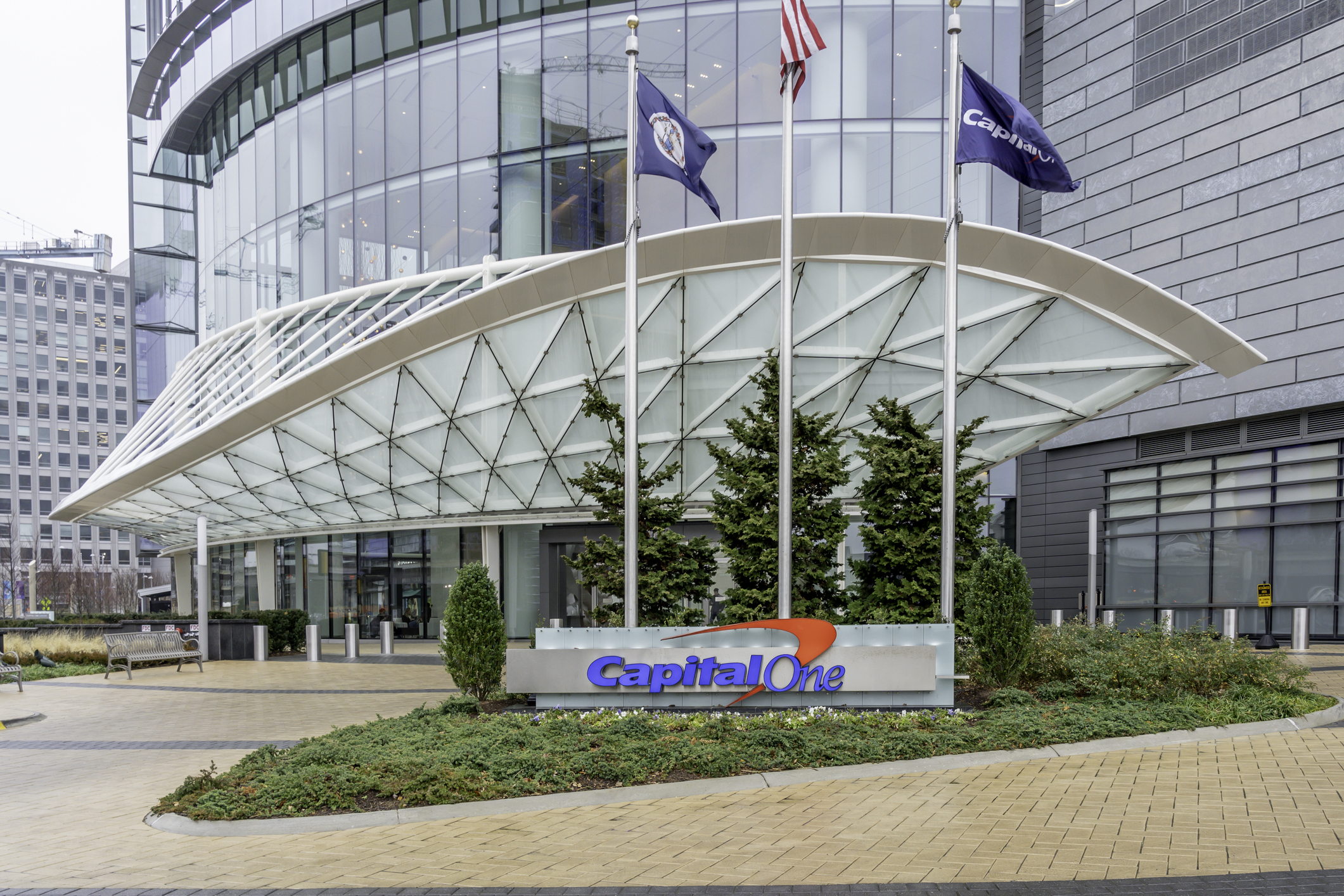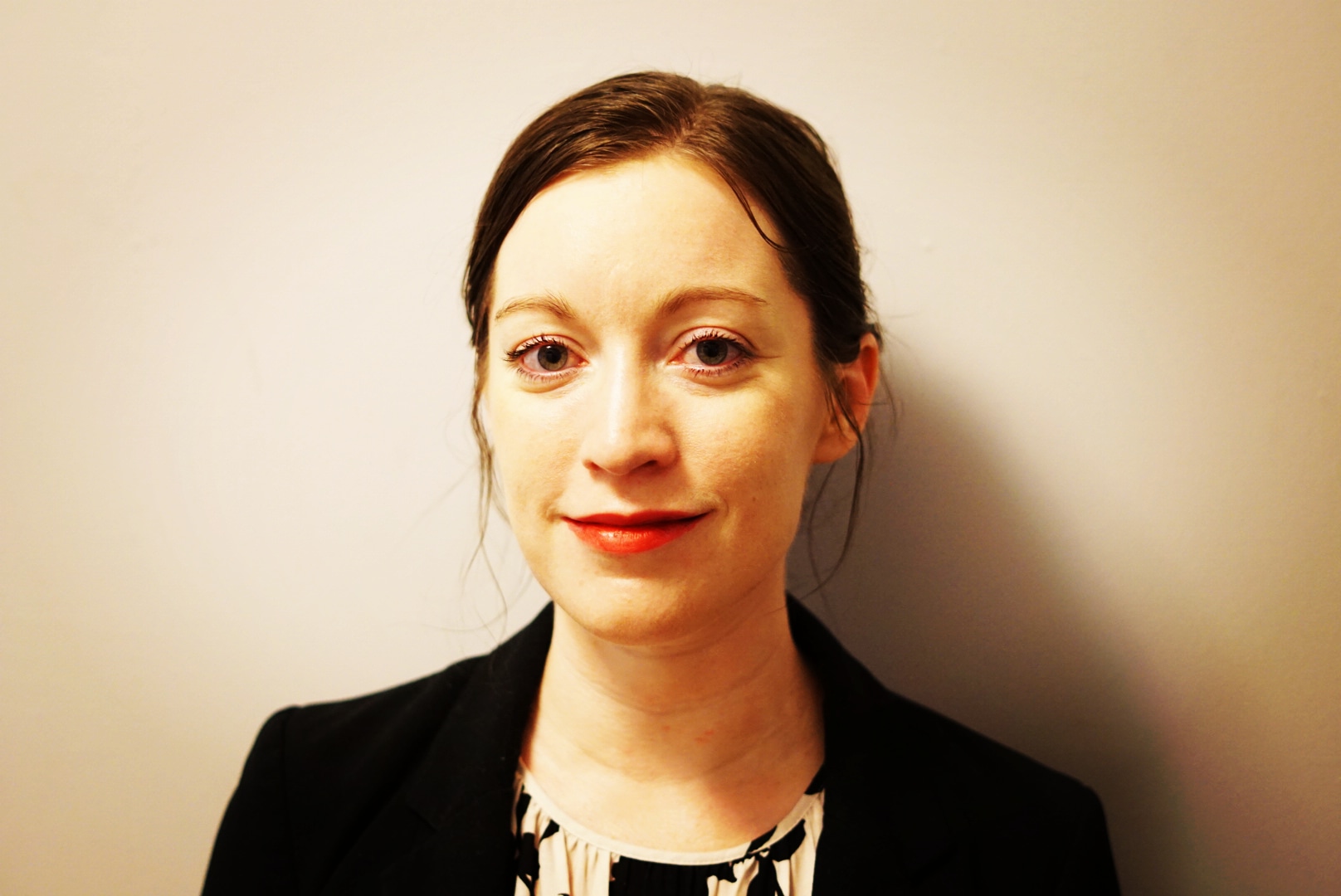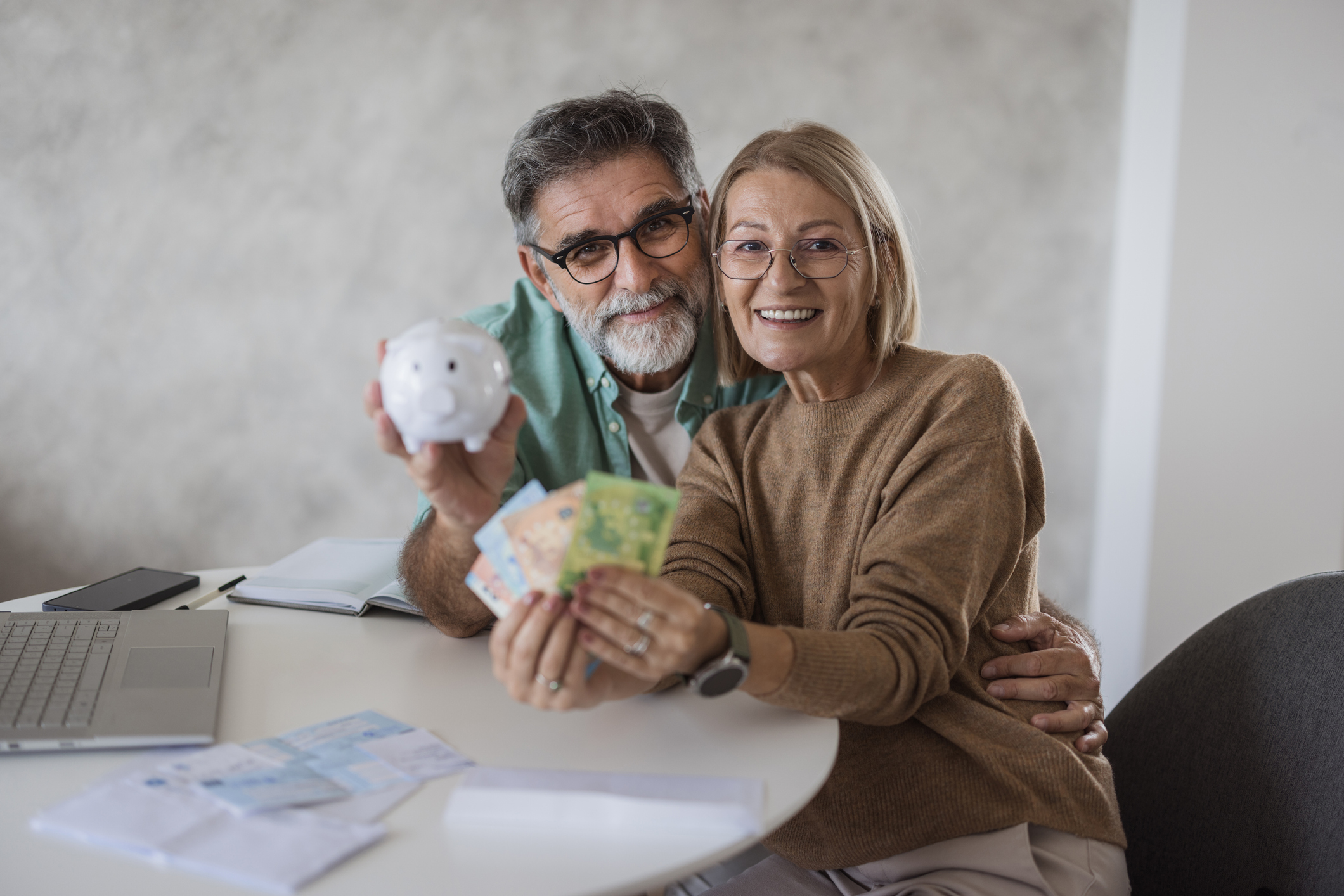Capital One $425M Class Action Settlement: Do You Qualify?
Capital One agreed to a $425 million settlement over its 360 Savings account interest rates. Here’s what you need to know.

Capital One agreed to pay a total of $425 million to customers who filed a class action lawsuit against the bank in 2024, according to a notice filed in the U.S. federal court in Alexandria, Virginia in May. The settlement is still awaiting the judge’s approval before payments can be sent out.
While there has been a ton of attention on the Capital One-Discover merger, the major bank has also been fighting a class action lawsuit regarding its savings account since last year. The lawsuit claims that Capital One pulled a bait and switch on savings account customers.
It advertised the 360 Savings account as its high interest savings account and later froze rates on that account at 0.3% while rates on its newer, similarly-named 360 Performance Savings account soared to a peak of 4.3% when the Federal Reserve began rapidly increasing interest rates.
From just $107.88 $24.99 for Kiplinger Personal Finance
Become a smarter, better informed investor. Subscribe from just $107.88 $24.99, plus get up to 4 Special Issues

Sign up for Kiplinger’s Free Newsletters
Profit and prosper with the best of expert advice on investing, taxes, retirement, personal finance and more - straight to your e-mail.
Profit and prosper with the best of expert advice - straight to your e-mail.
As a result, the lawsuit alleges, Capital One avoided paying over $2 billion in interest to its customers between 2019 and 2025. As part of the agreement, Capital One denies any wrongdoing. Here’s what we know so far.
What are the accusations in the Capital One lawsuit?

When Capital One first launched its 360 Savings account in February 2019, it was advertised as a high interest savings account. By September of that year, the bank had removed all references to that account, stopped offering it to new customers and replaced it with information about the new 360 Performance Savings account.
The new 360 Performance Savings account opened with a 1.9% APY, while the previous 360 Savings account earned just 1% APY. The lawsuit alleges that Capital One actively deceived customers by advertising the 360 Savings account as its high interest product, but then later creating a new, higher-earning account without automatically converting the older account type or notifying existing customers.
When the pandemic hit in 2020 triggering even lower interest rates, Capital One dropped rates on the older account type to just 0.3%, while the 360 Performance Savings account earned 0.4%.
The crux of the suit is what happened after this. When the Federal Reserve began a rapid series of rate hikes in 2022, the Capital One 360 Performance Savings account saw its APY soar to 4.3%, while the older 360 Savings accounts were frozen at the 0.3% rate.
The claimants allege that Capital One avoided paying over $2 billion in interest between 2019 and 2025 as a result.
The Consumer Financial Protection Bureau (CFPB) announced in January that it was also suing Capital One over the same issue. The agency accused the bank of actively obscuring the newer, higher-earning 360 Performance Savings from existing 360 Savings accountholders.
The CFPB suit alleged that Capital One did this by:
- Giving the new account an almost identical name, along with all the same terms and conditions (aside from the interest rate)
- Replacing all references to the original 360 Savings account on its website with information about the new 360 Performance Savings account, without notifying accountholders that it was maintaining the older account type as a distinct product (and that that product would no longer be its highest-earning savings account option)
- Forbidding employees from proactively telling 360 Savings accountholders about the new 360 Performance Savings product
- Excluding existing 360 Savings accountholders from an advertising campaign about the newer account – a campaign that showcased the higher earning product to all of Capital One’s other existing customers who didn’t currently have the older savings account
By February, the Trump administration dropped the Capital One case along with dozens of others. But if the CFPB’s suit had moved forward, it would have forced Capital One to pay even more into a victims' relief fund that could help Capital One customers recoup even more of the potential earnings they missed out on between 2019 and 2025.
Who is eligible for a payout from the Capital One settlement?
The settlement will apply to both current and former customers who have or had a Capital One 360 Savings account at some point between September 18, 2019 and the date the judge approves the settlement.
How much will members of the class action lawsuit get?
The $425 million settlement will be paid out in two ways:
- $300 million will be used to pay all members of the class action lawsuit the amount of interest they would have earned if their account had been earning the same rates as the 360 Performance Savings account. The amount each member gets will be based on the length of time they held the account and what the rates were for the 360 Performance Savings account during the time that they had the older 360 Savings account.
- The remaining $125 million will go toward customers who still have a 360 Savings account. Their accounts will now earn at least double the national average rate for savings accounts, as defined by the FDIC.
The exact amount each eligible recipient will get has not been calculated yet. However, it's currently estimated that those who have already closed their 360 Savings account (or who do so before October 2, 2025) will receive a 15% larger payout than those who keep the savings account open.
For those who keep it open, the payout will be smaller, but you will also receive additional interest payments in your savings account. Whether those additional payments outweigh the estimated 15% cut to your class action settlement payout remains to be seen.
If you want to try to calculate that additional interest yourself, the formula used is available. The amount will be the approximate amount of additional interest your account would have earned during the class period (September 18, 2019 through June 16, 2025) if your account had the same interest rate as the 360 Performance Savings account.
So, calculating it yourself would involve looking back through your records to find out when you opened the account. Then, find out what the 360 Performance Savings interest rate was for each month during that class period that your account was open. Finally, calculate the difference between the interest you would have earned in the higher yield account and the interest you actually earned.
If that sounds like too much math, you'll just have to make an educated guess. If you only had the account for a couple of months during that eligible window, closing your account now and opting for the larger cash payout might make more sense. But if you've had the account for a year or more or you have a large balance in that account, it probably makes more sense to keep the account open and take the additional interest payments.
When will Capital One begin sending out payments?
The settlement is still pending court approval, which is scheduled for November 6, 2025. In the meantime, the date that payouts start going out is still to be determined. If you think you're eligible for a payout, you will automatically receive a check. There's no need to file a claim.
But, if you'd like to choose a specific payment method or update your address, go to the Capital One 360 Savings Account Litigation website to learn more. You have until October 2, 2025 to choose a payment method. If you don't choose, the default method will be a physical check sent to you by mail to your last known address.
The same applies to customers who still have an open Capital One 360 Savings account. Since you are also entitled to backpay for unpaid interest under the settlement, you'll automatically receive the additional interest in your savings account.
How to make sure you’re really getting the best rate on your savings account

Whether you’re a Capital One customer or not, one thing this case highlights is the importance of being vigilant about your finances. Savings accounts – even high yield savings accounts – have variable interest rates by nature.
So, even if the account you opened offered the best rate at the time, that same bank or its competitors may be offering an even better rate now. Here are some steps you can take to make sure you’re always earning as much as possible on your savings:
- Check the best high yield savings account offers available every few months and compare today’s best rates to what your existing account is earning. Opening a new account online takes as little as five minutes, so it’s easier than ever to move your savings around as often as needed to make sure you’re always earning the best rate.
- Stash any savings you don’t need immediate access to in a high-yield CD account. Unlike savings accounts, a CD offers a fixed rate for the entire term so you won’t see your initially high APY dwindle over the next few months or years. With terms ranging from as little as three months up to five years, you can pick a time frame that fits with your savings goals. These are great to use for short-term savings goals, like a vacation you’re planning next year or a down payment on a new car.
- Check for fees and account requirements before opening an account. Some banks have minimum balance requirements, maintenance fees or other restrictions that can result in charges that eat into your savings. Taking a slightly lower interest rate on a no-fee savings account might end up earning you more than the higher-yield account with hard-to-meet requirements.
Related content
Profit and prosper with the best of Kiplinger's advice on investing, taxes, retirement, personal finance and much more. Delivered daily. Enter your email in the box and click Sign Me Up.

Rachael Green is a personal finance eCommerce writer specializing in insurance, travel, and credit cards. Before joining Kiplinger in 2025, she wrote blogs and whitepapers for financial advisors and reported on everything from the latest business news and investing trends to the best shopping deals. Her bylines have appeared in Benzinga, CBS News, Travel + Leisure, Bustle, and numerous other publications. A former digital nomad, Rachael lived in Lund, Vienna, and New York before settling down in Atlanta. She’s eager to share her tips for finding the best travel deals and navigating the logistics of managing money while living abroad. When she’s not researching the latest insurance trends or sharing the best credit card reward hacks, Rachael can be found traveling or working in her garden.
-
 December Fed Meeting: Live Updates and Commentary
December Fed Meeting: Live Updates and CommentaryThe December Fed meeting is one of the last key economic events of 2025, with Wall Street closely watching what Chair Powell & Co. will do about interest rates.
-
 This Is Why Investors Shouldn't Romanticize Bitcoin
This Is Why Investors Shouldn't Romanticize BitcoinInvestors should treat bitcoin as the high-risk asset it is. A look at the data indicates a small portfolio allocation for most investors would be the safest.
-
 I'm a Federal Benefits Pro: I Answer These 2 Questions a Lot
I'm a Federal Benefits Pro: I Answer These 2 Questions a LotMany federal employees ask about rolling a TSP into an IRA and parsing options for survivor benefits, both especially critical topics.
-
 Smart Money Moves Savers Should Make in 2026
Smart Money Moves Savers Should Make in 2026These steps will get you on the road to achieving your 2026 savings goals.
-
 Want to Change Banks? Try This 'Soft' Strategy
Want to Change Banks? Try This 'Soft' StrategyThe "soft switching" banking trend allows you to explore a new bank account while keeping your primary one. See how it could benefit you.
-
 No-Penalty CD or High-Yield Savings? What Works Best Now
No-Penalty CD or High-Yield Savings? What Works Best NowDiscover which option can help you reach your savings goals quickly.
-
 I Inherited $50,000, and My Retirement is Fully Funded. Where's the Best Place to Store It for Maximum Growth?
I Inherited $50,000, and My Retirement is Fully Funded. Where's the Best Place to Store It for Maximum Growth?These savings solutions can help you maximize returns without the risk.
-
 Where You Choose to Stash $100k Now Comes with a Big Opportunity Cost
Where You Choose to Stash $100k Now Comes with a Big Opportunity CostThe Fed recently cut rates. Here's where to maximize your savings while rates remain higher.
-
 Where to Deposit Your Social Security Check
Where to Deposit Your Social Security CheckIf you receive Social Security checks, where you deposit them matters because it can help grow your earnings. See the best options.
-
 Top Places to Park $10K (or More) as Rates Start to Fall
Top Places to Park $10K (or More) as Rates Start to FallWith more rate cuts upcoming, here are some smart places to maximize your savings on $10,000.
-
 Savvy Savings Moves to Make Now – Or You Could Lose Thousands
Savvy Savings Moves to Make Now – Or You Could Lose ThousandsDespite a rate cut and inflation, these moves can still help you reach your savings goals quickly.